Executive summary
Lion Nathan is the largest brewer company found in New Zealand. It has approximately ten breweries in different countries that it carries its operations. According to the top management of Lion Nathan, the main strategy of the company is expanding its operations into the new markets in different countries.
One of the organisation’s departments mandated with the duty of ensuring that the company succeeds in a new market is its human resource department. The essentiality of this report is to provide a detailed analysis an appropriate human resources strategy to make the new venture in Germany a success.
Introduction
Employees play a very essential role in the production process and service delivery in every organization (Armstrong 2006, p. 34). For employees to work effectively, the organization must develop an appropriate working culture. Over the recent years, most companies have resorted to expanding their territories into new markets in foreign countries.
The expansion strategies of business into a new foreign country often face numerous challenges. The main challenge of a firm entering a new market is the difference in cultures in the new market. As a result of different cultures in a new work environment, human resource managers are forced to develop a global approach to their human resource management functions and strategies.
Global human resource strategies aid a company to integrate its company values with the values in the new market as it accommodates the different needs of workers in the host country.
Currently, Lion Nathan Company and Brauerei C & A Veltins are considering having a joint venture to enable Lion Nathan Company penetrate into the German market. The essentiality of this report is to provide a detailed analysis an appropriate human resources strategy plan to make the new venture in Germany a success.
Lion Nathan company’s profile
Lion Nathan started in 1988 from the merger of Lion Corporation and L. D. Nathan Company. Lion Nathan started in New Zealand. Currently, it operates internationally in foreign countries such as China, Australia, America, and some countries in Europe and Asia (Lion Nathan 2013). The company offers beer, wine, spirits among other soft drinks to its clients (McFarland 2009, p.43).
Lion Nathan is a big company that offers over fifty brands of liquor. It also has approximately ten breweries in different countries that it carries its operations. The company is the largest brewer company found in New Zealand (Lion Nathan 2013).
Currently, Kirin Brewery Company of Japan owns 45 percent of Lion Nathan. Lion Nathan’s operating and net income of as at 2013 stood at $ 8400 million and $ 600 million respectively (Lion Nathan 2013). The company boasts of having approximately $10 billion worth of assets. It also employs over 6000 employees (Strathkötter, 2003, p.12).
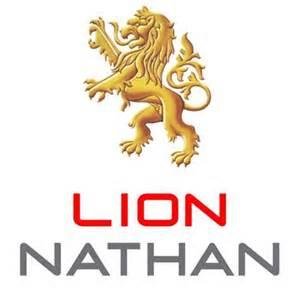
Currently, the management team of Lion Nathan consists of extremely skilled board of directors. The mission statement of Lion Nathan is to avail quality drinks to its consumers at cheaper and affordable prices (Lion Nathan 2013).
To succeed in most of their new markets, Lion Nathan often use lower pricing system and provision of quality services products as their market entry strategy (Lion Nathan 2013). The company maintains the provision of high-quality products that aid in placing them ahead of their competitors.
The management of Lion Nathan also maintains a culture of employing innovative, experienced, qualified, and skilled employees. Lion Nathan uses continuous product reengineering processes to reduce the number of customer complaints.
The company uses intensive business image and product promotion to increase awareness of Lion Nathan and its products in its market (Lion Nathan 2013). The culture at Lion Nathan embraces cultural diversity among their employees.
Economic Driver
German economic driver
German has the fifth largest economy in the whole world. The German economic drivers include existence of a high demand of the country’s locally provided products, high population, European Union trade block, highly advanced technology, skilled and competent human resource, high-level exportation of automobiles, and good economic environment for new investments (Schulze 1998, p. 23).
Possibility of Lion Nathan Expanding in Germany
Analysis of German Retail Industry
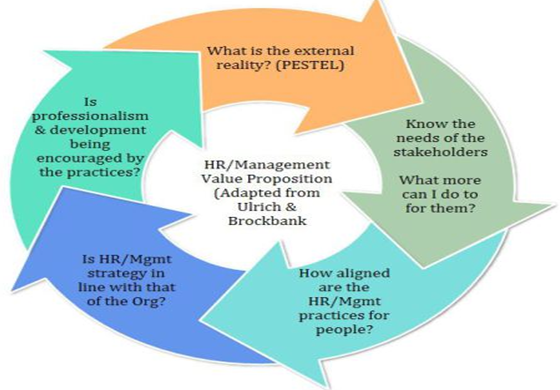
According PESTEL, Germany is good target market for Lion Nathan’s market expansion. Politically, Germany has a politically stable government that can facilitate the existence of the joint venture in the country (Venohr and Meyer 2007, p. 102). Germany has favorable tax policy that will encourage foreign investment in the country.
The existence of trade blocks such as the European Union is beneficial to different firms that operate in Germany and other members of the EU. However, the country has into its system a strong labor union (Jehle, 2009, p. 101). The strong labor union ensures that workers in the country receive the best treatment according to the law. It also makes labor cost expensive.
Economical analysis of the country reveals that Germany has the fifth largest economy in the whole world (Venohr and Meyer 2007, p. 102). In Europe, Germany has the largest economy since it leads in exporting vehicles, machinery, household equipment, and chemicals (Hans-Joachim 1990, p. 107). Most industries in Germany benefits from the existence of highly skilled labor force in the country.
Relatively, Germany has a small unemployment rate. Germany continues to experience an increase in GDP (Venohr and Meyer 2007, p. 4). The currency of the country fetches higher exchange rates than the currency of other neighboring countries. The country also employs tax cuts on it products. German economy trails on the free market principles.
German country has an area of about 357,114 km2 (Jehle, 2009, p. 76). Most people in the country communicate in German language. Most Germans prefer staying in urban areas as opposed to living in the rural region of the country.
According to the national census of 2010, the country has approximately 82 million occupants (Venohr and Meyer 2007, p. 14).The large population provides a good market for the products of Lion Nathan. Most of the citizens are well off and live above a dollar a day. There is an increasing trend in the purchasing power of the middle-class citizens.
Technologically, Germany has diversified industries. Germany is a global leader in many of its sectors since the country possesses the best technologies (Venohr and Meyer 2007, p. 102). Germany forms the third largest producer of automobiles in the entire world. Germany relies heavily on production of automobiles such as BMW, Daimler AG, Porsche, Audi, and Mercedes-Benz (Hans-Joachim 1990, p. 107).
Almost three-quarter of vehicles produced in Germany are for export purposes. Technology facilitates the construction of big machines and plants in Germany. The most innovative sectors in Germany employ the use technologies involving renewable energies, information technology, and biotechnology. They use computer-based systems to aid them in carrying out most of their industrial activities (Venohr and Meyer 2007, p. 83).
A legal study of Germany reveals that German is legally stable country. The During a joint venture in Germany, factors such as taxes, product quality, environmental standards, trademarks, and competition regulations must be followed (Jehle, 2009, p. 76).
Germany has precise regulations when it comes to labeling its local products, especially food products (Jehle, 2009, p. 101). Germany government has in place a consumer protection body to aid in maintaining the safety of its products. The body tests and analyzes products to access their contents and monitors their effects when consumed by consumers (Jehle, 2009, p. 101).
Lion Nathan Germany Expansion Business strategy plan
Lion Nathan should consider undertaking a joint venture to aid in penetrating the German market. The joint venture will aid in reducing the expenses that will be used to come up with new a new drinks factory. When in the German market, Lion Nathan will look into the consumer patterns in Germany to aid in boosting the quality of their products.
Lion Nathan will also use the societal value marketing in the Germany to aid them have an advantage of gaining the market (Salas 2006, p. 117).
It is advisable for the company to employ a target market technique in various segment of German market as it begins its operations. Finally, the company should beware of the increasing technology in the markets of Germany to ensure that it operations and activities does not involve the usage of outdated technology.
Business Risks/ HR Strategy Approach
The main business risk in a business joint venture includes the complex human resource system. Currently, all organizations operating international businesses must learn to embrace different cultures of their employees in their organization. As for Lion Nathan’s joint venture, there will be a problem of integrating the human resource cultures of the joining companies (Beardwell and Claydon 2007, p. 54).
Lion Nathan may find it difficult to cope with the needs of their new employees in Germany. To mitigate such risks, Lion Nathan will develop a global human resource strategy. For instance, Lion Nathan will have single organizational culture in the joint venture business. As a result, it could be difficult to distinguish an employee’s cultural backgrounds.
Lion Nathan human resource strategy often involves creating a team of employees that is always committed to maintaining the company’s values. One of the values of the company is eradicating cultural diversity in the workplace (Legge 2004, p. 76). Lion Nathan developed this company value since it operates in different countries having different cultures.
The business will recruit only those workers that have high capability of assimilating the Lion Nathan business culture of embracing togetherness in work environment despite the fact that their employees originate from countries having different cultures.
The global human resource strategy of Lion Nathan also insists on recruiting employees who are highly skilled, innovative, goal-oriented, team player, and good communicators. To get the best employees for the joint venture, Lion Nathan will use recruitment sitting tests and interviews to aid in eliminating potential employees who lack the desired qualities (Legge 2004, p. 76).
HR Strategies for the Joint Venture
Organizational Structure
The headquarters of the company will be based in New Zealand headed by the CEO. However, the joint ventures in Germany will have two managers (A manager from Germany and another from New Zealand). Each of the two managers will consult each daily as they make decisions involving operations of the joint venture.
The two managers will have different divisions under them in order to enhance smooth running of the business in Germany.
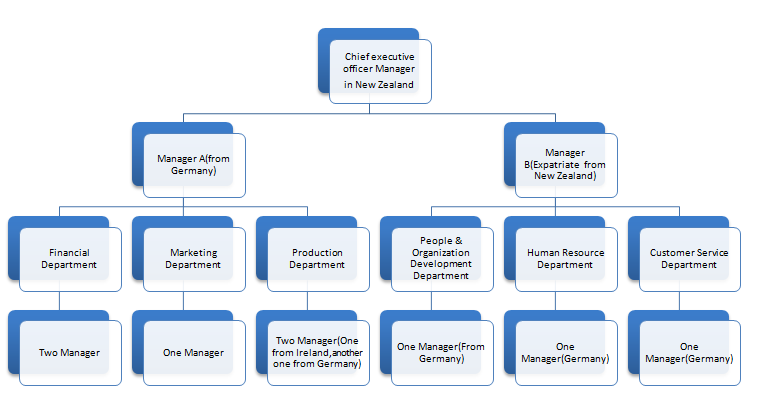
Recruitment and Selection
Recruitment often refers to the process whereby a company comes up with a pool of potential candidates from which the company shall critically select the most relevant and appropriate candidate to fill a vacant job position in the company (Truss, Mankin, and Kelliher 2012, p. 67).
Lion Nathan will use the international human resource management model to identify and recruit the best candidates as employees in its organization. According to international human resource management model, there are three main factors involved in human resource activities include factors such as procurements, utilisation, and allocation (McCall and Hollenbeck 2002, p. 67).
Lion Nathan is a multinational company that embraces intercultural diversity within their organisation and the company’s employee recruitment programs. The human resource department will not only look at the academic credentials, skills, competencies, and experience of their potential employees.
The company will use a cultural awareness strategy that involves looking into the capability of a potential employee to adapt to new cultures (McCall and Hollenbeck 2002, p. 67). The strategy often helps Lion Nathan in coming up with an appropriate workforce to perfume numerous international duties in countries that have extremely different culture from that of the employee.
Just as in other countries, Lion Nathan will use a specific process to fill its job vacancies in Germany. For instance, Lion Nathan’s management will identify the vacant positions in the joint venture. Thereafter, the management team will specify the job requirements of the vacant positions and specific skills required for the job positions.
Lion Nathan will use online advertisements together with advertisement on the local newspaper to inform potential workers in Germany of its job vacancies. The strategy will enable the company to reach many potential candidates.
The company will mandate all potential applicants for the vacant positions to submit their applications through mail using a direct email address to the company’s human resource department ([email protected].). Potential applications can also deliver their application letters through the company’s postal address within a specified deadline.
Thereafter, applications shall be sorted according to positions applied for by each candidate. An elimination process basing on the experience, skills, academic credentials, and competency among other things will follow to aid in coming up with appropriate people for the recruitment test and interview (McCall and Hollenbeck 2002, p. 46).
According to Rodger’s seven-point plan, the company seek to come up with a human resource team that unique, dynamic, appropriate, and relevant to the work environment of the company.
Rodger’s seven-point plan for Lion Nathan potential employees
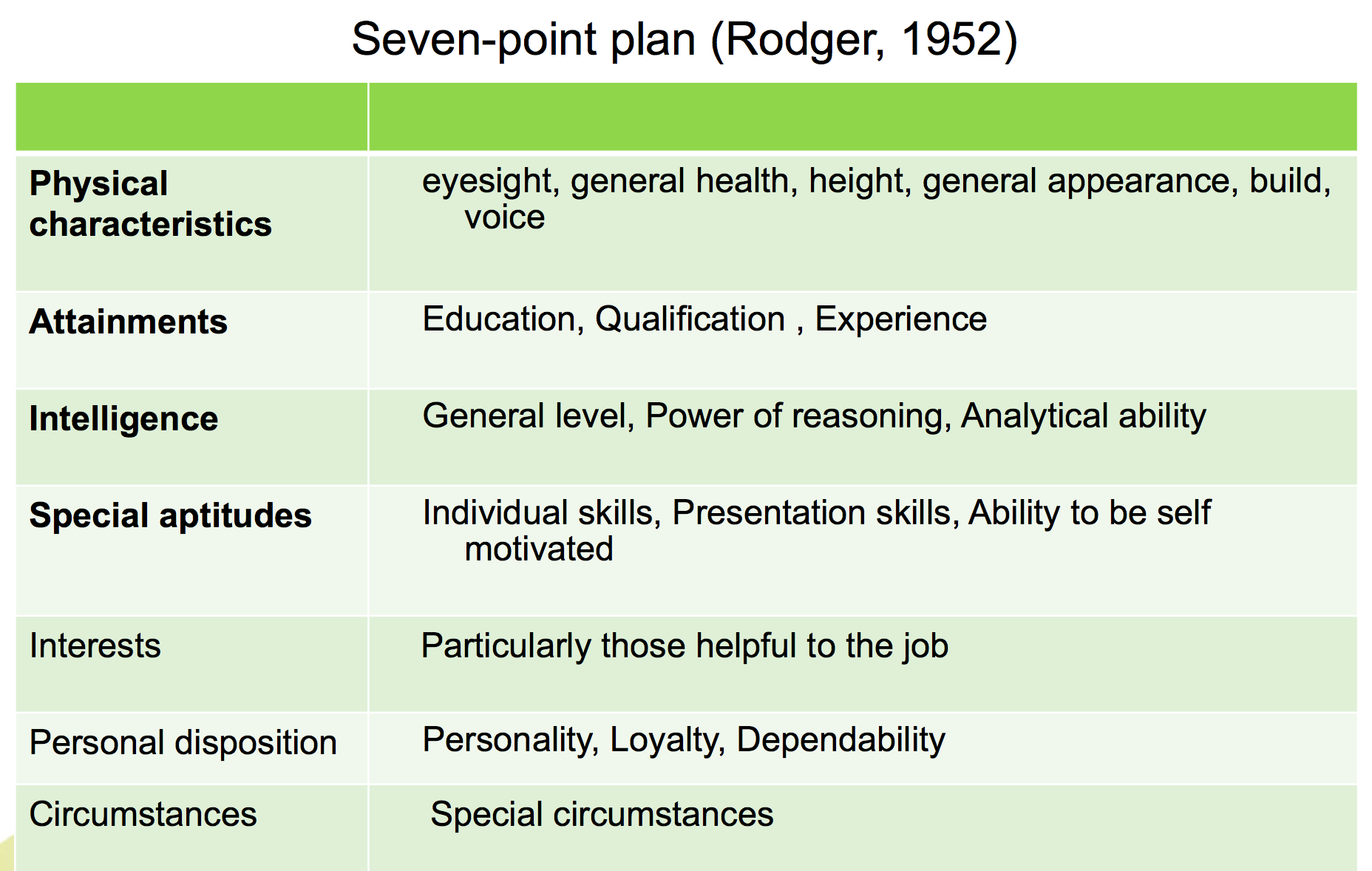
To get the best employees for the joint venture, Lion Nathan will use recruitment sitting tests and interviews to aid in screening and eliminating potential employees who lack the desired qualities. The human resource department will not only look at the academic credentials, skills, competencies, and experience of their potential employees.
The company will use a cultural awareness strategy that involves looking into the capability of a potential employee to adapt to new cultures (Reuvid 2006, p. 14). The strategy often helps Lion Nathan in coming up with an appropriate workforce to perfume numerous international duties in countries that have extremely different culture from that of the employee (Reuvid 2006, p. 14).
The recruitment of Lion Nathan also considers the personality traits of a potential employee to screen potential employees before bringing him or her into their system. The company believes in the fact good employees often supplement their good personal traits with their job-related competencies to perform best at their work environments (Wright 2005, p. 6).
Job-related competencies are never adequate requirement for employees in a dynamic work environment. Lion Nathan’s human resource department is also very keen on employing innovative, goal oriented, passionate, and employees who are technologically oriented.
Training and Development
Employee training is the most effective program in employee growth and development (Reuvid 2006, p. 14). Most companies in international business experience intense competition from rival companies that have huge asset base. It is essential for the multinational companies such as Lion Nathan to conducted regular employee training activities.
Regular employee training aid multinational companies enhance the competencies of their employee to fight intense rivalry in the market (Commings 2009, p. 81). In 1996, Lion Nathan launched an in-house employee training to enhance their employee’s development and growth. The training program greatly majored on the varied needs of the customers of the company in the global context and the ways to fulfil these customer needs.
ASK Model
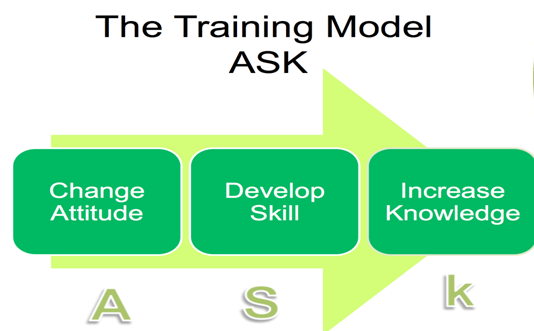
The human resource department of Lion Nathan divided their training program into two distinct phases. The first phase of the training program involves a training process for new employees and training program for existing employees. Lion Nathan’s new employee training program follows the ASK training model.
For instance, the training process has an interactive session of new employees with existing employees to aid them understand the culture of the organization (Torrington, Taylor, Hall, and Atkinson, 2010, p. 24). The session enables new employees change their attitude and develop the attitude of other employees in the organization.
It also gives such employees an opportunity to think about new things they can do to help the organization succeed. Thereafter, the new employees face a professional skills training program.
The program aims at enhancing employee job satisfaction and promoting employee confidence and loyalty to the organization. Finally, there is team building training program for promoting cohesiveness within the organization. The program involves a trip to one of the international stores of the company.
As for the existing employees, there training program focuses on building and improving the competencies levels of the employees in production and serve delivery. The training program focuses on five basic requirements of human resource (West 2010, p. 14).
Firstly, the employees receive training on how to be innovative in their work environment. They are trained on how to implement their ideas in the work environment. It is the policy of Lion Nathan to employ and maintain innovative employees. The employees are also trained on how to improve on their production performance and serve delivery.
The employees receive training on how to provide and give outstanding services to customers by enhancing communication skills of each employee in different culture and work environment. Lion Nathan has a policy of availing only the quality products to their customers. As a result, employees are also trained on how to improve on the quality of the company’s products.
The employees receive training on how to develop specialized skill such as sales, accounting, transparency, time management, and leadership skills. Finally, employees are also trained to meet specific need of each market segment depending on the location of the branch of the company.
Lion Nathan developed this strategy since the company realized that employees must always maintain cultural diversities according to the needs of their varied markets to aid the company become successful in different markets (Torrington, Taylor, Hall, and Atkinson, 2010, p. 24).
As a result, employees of Lion Nathan often undergo a training process to enable them develop the skills for embracing cultural diversity in their workplaces as they strive to maintain the values of the Lion Nathan. During employee training process, Lion Nathan often involves the usage of skilled local employees in their host country and expatriates.
Rewards Management
The employee reward system of Lion Nathan is comprehensive, equitable, and easy to understand. Using the Maslow’s hierarchy of needs theory, Lion Nathan will develop an appropriate reward system for its workers.
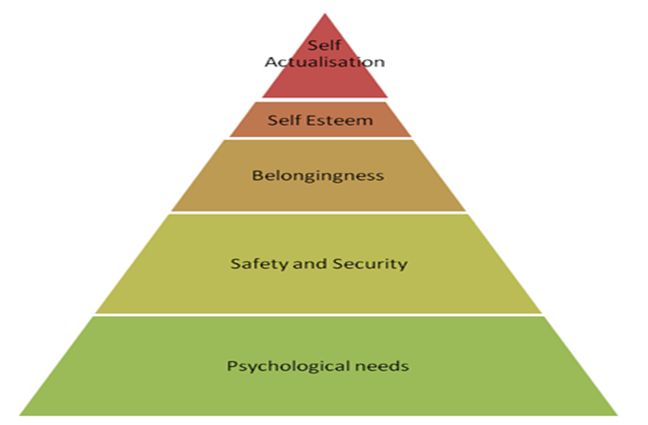
In 2008, Lion Nathan abandoned the traditional reward model that the company was using to reward and compensate employees for their performance. Initially, the company pegged a fixed rewards system on their employees in the form of salaries. The reward system created discomforts and struggles among employees of Lion Nathan. As a result, the company developed the current reward model.
The current reward system incorporates a fixed basic salary together with varying rewards based on the performance of each employee.
Every year each employee at Lion Nathan receives a Christmas bonuses according to the reward scheme of the company. Lion Nathan operates a health savings account on behalf of their employees whereby each employee in the organizations subscribes to a health costs-reimbursement system.
Performance Management
In most cases, human resource management often consists of three factors that include work environment, activities of human resource management, and finally organisation’s strategy. According to the theory of employee participation, there is always a strong relationship between resource management functions and company’s performance.
High-efficiency level in human resource management will always lead to high employee performance (Godemann and Michelsen 2011, p. 34). It is the sole duty of the human resource manager to recruit the most appropriate employees into an organisation. It is evident that human resource managers are directly responsible organisations’ performances.
According to the theory of employee participation, employees must be given the opportunity in taking part of the decision-making process of an organisation. It aids in ensuring that the organisation takes care of the needs of employees within the organisation. According Maslow hierarchy of needs, different employees have different needs depending on their level in the social stratum.
The main need of an employee in Maslow’s hierarchy of needs is obtaining job satisfaction in their work environment (Briscoe, Schuler, and Tarique 2011, p. 87). Companies can ensure their employees attain employee job satisfaction through proper working conditions, salary reviews, employee promotion, and employee recognition (Miner 2005, p. 14).
Herzberg’s model outlines dissatisfiers and motivators of employees in an organisation. From the Herzberg’s model, organisations learn that employees’ motivation is an essential factor in improving an organisation’s performance (Richard 2013, p. 102).
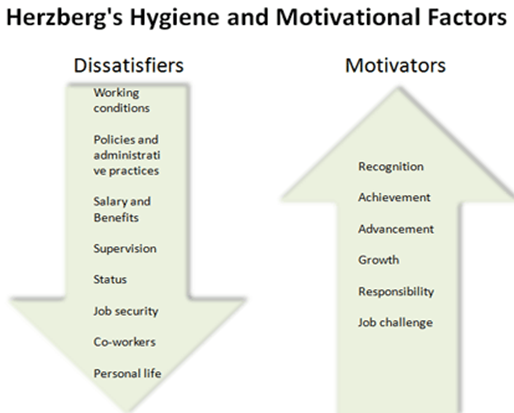
As a result, human resource managers should ensure that all employees are highly motivated to perform efficiently for organisations to achieve their desired goals (Linda 2001, p.42). In addition, they should ensure that employees work in good working environment. Lion Nathan’s human resource is conversant with the need of their employees.
The human resource manager ensures that the employees in an organisation work in good working environment (Lawn 2009, p. 36). The manager also ensures that he reports all the needs of employees to the overall manager for appropriate action. Currently, most of the needs of employees working at Lion Nathan’s are fulfilled by the organisation through the human resource department.
The human resource manager of Lion Nathan monitors and controls the performance levels of all employees in the organisation. To evaluate the performances of various employees at Lion Nathan, human resource managers focus on three areas including finance field, individual fields, and departments.
As a human resource manager evaluates departments, he focuses on individual and teams’ performances. The human resource manager looks into the level of individual and teams’ delivery of services.
Using the financial field, human resource manager evaluates performance of employees by focusing on various things such as ability of employees to meet their targets, actual number of hours worked by employees against their required work hours, and finally the amount of financial liability caused by employees to the company during employees work hours.
Using people field, human resource manager often focuses individual and team’s productivity level, employees’ attitudes towards work, and opinion of supervisors and other managers on employees. The human resource manager uses the process outlined below to carry out his employee performance management.

The human resource manager gives rectifying control mechanism to employees who lag behind in performance according to his survey. He also gives rewards such as vocational holidays, bonuses, and presents to the most hardworking employees.
Factors influencing HRM strategy
Cultural factors
Many multinational companies often fail in their new markets simply because they do not embrace cultural diversity in their new markets (Ehnert 2009, p.1). According to Handy’s organisational culture model, successful organisations often develop their culture from the integration different cultures in the society that the organisations carry out its activities.
As for Lion Nathan’s joint venture, there will be a problem of integrating the human resource cultures of the joining companies. In addition, Lion Nathan may find it difficult to cope with the needs of their new employees in Germany. To mitigate such risks, Lion Nathan will develop a global human resource strategy.
National factors
The environment provided by national business is also a factor affecting human resource strategy used by international companies in their new markets. From a polycentric approach, it is evident that the country’s policy on human resource influences human resource management strategy since it dictates policies business will develop in their new market.
Political stability of the country also influences the nature of human resource management strategy developed by on organisation in its new market. Politically stable countries provide multinational companies with numerous approaches to human resource management.
Politically unstable countries restrict multinational companies to use specific human resource management strategy that favours the existing government (Budhwar and Debrah 2013, p.89).
Organisational factors
Some organisational factors often influence human resource management strategy developed by human resource management department or an organisation. Some of some of such organisational factors that influence human resource management strategy include requirements of the stakeholder, vision and mission of the company, and type of leadership used by the parent company.
Human resource managers must always restrict their activities according to the requirements of their stakeholders and policies of the senior most managers (Torrington, Taylor, Hall, and Atkinson, 2010, p. 24).
Conclusion
The good German economy is appropriate for a joint venture. From the PESTEL analysis of the German market, Germany is a politically stable country having a huge population to provide favorable market for Lion Nathan’s drinks. The strengths in the German market include the increasing consumer consumption since there is an increasing trend in the middle-class in Germany.
The class will provide a potential ground for consuming products of Lion Nathan. German market also has a variety of efficient and educated workforce that will provide quality personnel for the company. An appropriate human resource management strategy will ensure that the joint venture in Germany will be a success.
Recommendations
As Lion Nathan considers entering into the German market, it should continue embracing cultural diversity into the new market. The company should carry out a survey on varied cultural requirement in German market to enable the company to come up with ways of integrating the cultures of the market with the values of the company.
The human resource department of Lion Nathan set good working environment for workers in the German market. They should also find ways of motivating such workers by involving them in decision-making of the company, rewarding them fairly, and training them regularly to aid them improve on their performances.
The German market requires the company to hire skilled, competent, and experienced employees who can assimilate new cultures.
References
Armstrong, M. 2006, Handbook of Human Resource Management Practice, 10th edn, Kogan Page, London.
Beardwell, J. & Claydon, T. 2007, Human Resource Management: A Contemporary Approach, Prentice Hall, New Jersey.
Briscoe, D., Schuler, R., & Tarique, I. 2011, International human resource management: Policies and practices for multinational enterprises, Routledge, London.
Budhwar, P. & Debrah, Y. 2013, Human resource management in developing countries, Routledge, London.
Commings, W. 2009, Organization development and change. Mason: Cengage Learning
Ehnert, I. 2009, Sustainable Human Resource Management: A Conceptual and Exploratory Analysis from a Paradox Perspective, Springer, London.
Godemann, J. & Michelsen, G. 2011, Sustainability Communication: Interdisciplinary Perspectives and Theoretical Foundations, Springer, London.
Hans-Joachim B. 1990, The German Economy in the Twentieth Century, Routledge, London.
Jehle, J. 2009, German Federal Ministry of Justice. Criminal Justice in Germany, Forum-Verlag, Berlin.
Lawn, P. 2009, Environment and Employment: reconciliation, Taylor & Francis, New York.
Legge, K. 2004, Human Resource Management: Rhetorics and Realities, Palgrave Macmillan, Basingstoke.
Linda M. 2001, Introduction to Human Resource Management, Palgrave Macmillan, Basingstoke.
Lion Nathan 2013, Our history. Web.
McCall, M. and Hollenbeck, G 2002, Developing the Global Executives: The Lessons of International Experience, Harvard Business School Press, Boston.
McFarland, B. 2009, The World’s Best Beers: One Thousand Craft Brews from Cask to Glass, Sterling Publishing Company, Berlin.
Miner, J. 2005, The organizational Behavior: Essential Theories of Motivation and Leadership, M.E. Sharpe publishers, Armonk.
Reuvid, J. 2006, The Sustainable Enterprise: Profiting from Best Practice, Kogan Page Publishers, New York.
Richard, A. 2013, Job Satisfaction from Herzberg’s Two Factor Theory Perspective, GRIN Verlag, Munich.
Salas, P. L. 2006, Germany (Countries & Cultures), Capstone press, Minnesota.
Schulze, H. 1998, Germany: A New History. Harvard University Press, Harvard.
Strathkötter, F. 2003, Brand Analysis of Lion Nathan China, GRIN Publishing, Munich.
Torrington, D., Taylor, S., Hall, L., & Atkinson, C 2010, Human Resource Management, Prentice Hall, New Jersey.
Truss, C., Mankin, D., & Kelliher, C. 2012, Strategic human resource management, Oxford University Press, Oxford.
Venohr, B. & Meyer, E. 2007, The German Miracle Keeps Running: How Germany’s Hidden Champions Stay Ahead in the Global Economy, FHW Berlin, Berlin.
West, S. 2010, The impact of training on the frequency of internal promotion of employees and managers, ProQuest Publishing, Michigan.
Wright, S. 2005, The Civil Rights Act of 1964: A Landmark for antidiscrimination Legislation, The Rosen Publishing Group, New York.